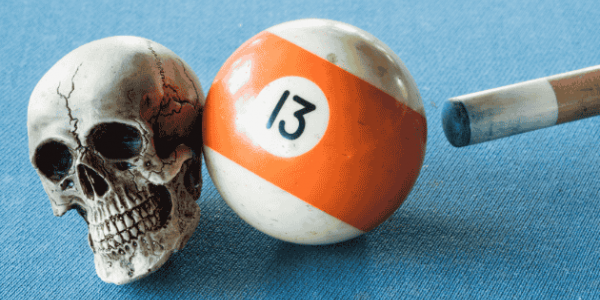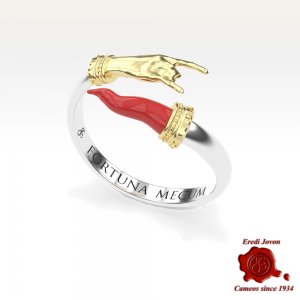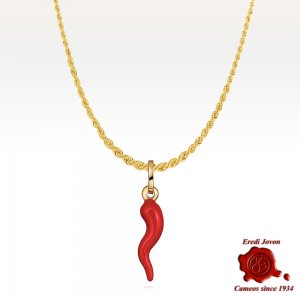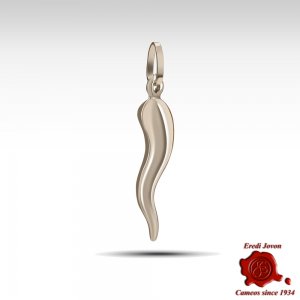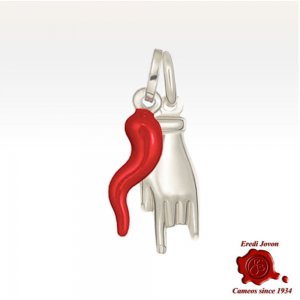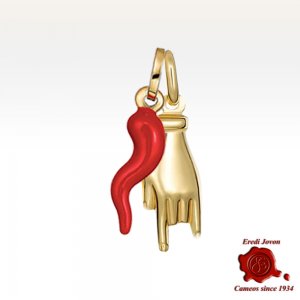What is Malocchio | Italian Evil Eye

In Italy, when someone mentions the "malocchio" — the Evil Eye — everybody immediately knows what you're talking about. It’s one of those age-old ideas that still live in the Italian culture and tradition: the thought that an envious malevolent or unfriendly look can bring bad luck, a run of small mishaps, or even a general sense of sickness. That’s why we still say things like “he looked at you funny (storto)” or “that person brings misfortune.”
The remedy let's say in advance is one of the thousand Italian good luck charms. You just need to choose which one ... but everything in its own time!
A small but important note
Let’s be honest: calling someone unlucky or saying they “carry bad luck” is a pretty cruel thing. Thankfully, today most people see this belief for what it is and don’t point fingers anymore. In the past, however, it was often those who were “different” — lonely women, the elderly, people with physical disabilities, outsiders — who ended up accused of casting the malocchio. A superstition that sometimes turned into exclusion, even persecution.
So, yes, the Evil Eye was superstition — but also a mirror of society: on one side, the human need to give a name to envy and negative energy; on the other, the risk of blaming those who were weaker.
Today, in this post, we leave aside the moral judgments and look at the symbolic meaning. And this gives us the perfect excuse to talk about talismans and first of all the cornicello — those little objects, heavy with tradition and stories, that Italians have carried for centuries to keep away negativity and to celebrate their roots.
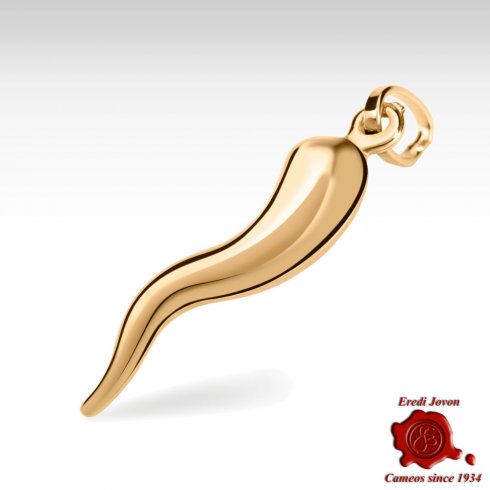
Gold Cornicello – The Italian Horn against the Evil Eye
The cornetto (or cornicello) is the most iconic Italian charm used for centuries to ward off the malevolent gaze. This genuine 18 kt yellow gold pendant is not only a symbol of protection, but also a timeless jewel of Italian craftsmanship. Wear it on a chain or add it to your lucky charm bracelet.
Discover the Gold Italian HornAncient Beliefs about the Evil Eye
The idea of being struck down by an envious glance is older than Rome itself. The Greeks called it "baskanos", the Romans called it "oculus malus" — the “bad eye.” In both cases, the gaze was seen as an invisible arrow.
Fun fact: in Pompeii, archaeologists found small obsidian mirrors. They weren’t only used for checking your hair — they were believed to bounce envy back to whoever sent it. A simple trick, but full of meaning. Let's say a primitive Nazar Eye Amulet or later for romans, the origin of the Horn Necklace
From there the superstition spread all around the Mediterranean. In Italy, it sank so deep into daily life that it became part of our everyday language.
We still say things like:
- “He looked at you sideways” — meaning a hostile glance.
- “Green with envy” — jealousy turning into a color.
- “He brings bad luck” — blaming misfortune on someone’s mere presence.
These sayings, still on our lips today, show how deeply the idea of the Evil Eye is woven into Italian life. For centuries, it’s been a way of giving misfortune a face when reason wasn’t enough.

Evil Eye Charm in Gold
The Evil Eye has been one of the most powerful symbols against envy and negative energy for centuries. This genuine 18 kt yellow gold charm can be worn on a necklace or added to your favorite bracelet, bringing both timeless protection and elegance.
Discover the Evil Eye in GoldWho Could Cast the Evil Eye?
According to tradition, the answer was simple: anyone. No spells needed, no special powers. Just envy in the eyes.
That’s why even inside a family it was said a mother too proud of her child, or a jealous brother, could unintentionally “give the eye.”
But in the village imagination, some figures were more suspect than others:
- the old widow living alone, unfairly branded a witch;
- the baby born with a caul, thought to have strange powers;
- the beggar, staring hard at anyone refusing him a coin;
- the nosy neighbor, always spying;
- the stranger, guilty only of being an outsider.
- people with physical disabilities
Lo Jettatore | The Caster
Fun Fact: In Naples, there was even a stock character: the jettatore. Picture him — thin, pale, with sunken cheeks and big dark glasses. With a single glance he was said to spread misfortune. People feared him, but they also laughed: he became part of theater, jokes, and everyday talk. Just mentioning his name made people flash the devil horn sign with their hand, just in case.
Because envy and jealousy are as old as humanity. A lush garden, a healthy cow, a beautiful child — all reasons to arouse suspicion.
The Unintentional Evil Eye
And not all malocchio was on purpose. Sometimes it was unintentional, born from nothing more than a long look or a hidden wish. That’s perhaps the most fascinating part: a glance could wound even when no harm was meant.

Cornicello Bella Italia Tricolore Flag
Exclusive Italian horn pendant with the colors of the Italian flag. A unique charm that celebrates tradition and Italian identity, perfect for a chain or your lucky charm bracelet.
Cornicello TricoloreHow Do You Know You’ve Got the Evil Eye?
Let’s not get too dramatic here. Forget headaches or sudden fatigue — for those, call a doctor, not a jeweler and please don't say this is a job for an Italian horn necklace
In popular tradition, the Evil Eye shows itself through those small comic misfortunes of daily life: the toast that falls butter-side down, the ice cream that melts all over your hand, or the traffic light that blocks you three times in a row.
We had fun writing about this in another article: 7 Funny Signs You Might Have the Evil Eye
Because superstition, at the end of the day, is also about laughing at ourselves, turning little slips of fortune into stories worth telling.
As Nonna Carmela likes to say: it’s not about surviving catastrophes, but about taking care of yourself, your roots, and your story.
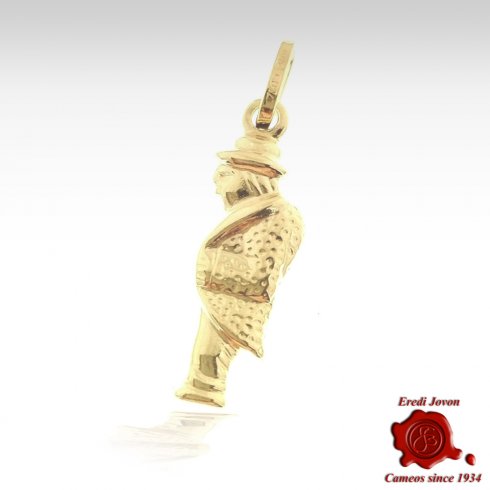
Hunchback (O’ Scartellato) Charm
The Hunchback, known in Naples as O’ Scartellato, is a traditional Italian symbol of good luck and protection. With his humorous appearance, he was believed to scare away envy and the evil eye, turning misfortune into a smile. Wear this charm on your necklace or bracelet as a quirky yet meaningful talisman.
Discover the Hunchback CharmHow Italians Defend Against the Evil Eye
Over time, Italians put together a real toolbox of superstition, split in two: rituals and amulets.
Rituals
Rituals were usually simple things, often in the hands of grandmothers. The best-known? A glass of water with a drop of oil to “test” if you’d been cursed. Or a prayer whispered at midnight.
But if bad luck struck, rituals became mandatory. If salt spilled, you had to throw a pinch over your left shoulder. If a black cat crossed the street, you let someone else pass first. If wine or oil spilled, you needed a little gesture to fix the damage.
They weren’t just superstitions — they were almost like community rules.

Silver Nazar Eye Amulet
Classic and powerful, this silver Nazar Eye amulet embodies the ancient Mediterranean tradition of protection. A handmade Venetian charm to keep envy and negativity away with style.
Discover the Silver EyeAmulets
Then, of course, there were the objects. Let's talk now about The Italian Good Luck Charms
- the red horn (cornetto), Naples’ most famous weapon against envy;
- the horned hand, both a gesture and a charm;
- the little hunchback, funny to look at but thought to scare away bad luck;
- the horseshoe, guarding the doorway;
- the Nazar Eye, borrowed from the East, a circle of color reflecting jealousy away.
Today these aren’t only popular charms — they’ve become jewelry. Art you can wear, with centuries of culture hidden inside.

Gold Mano Corno Charm
The Mano Corno, the traditional Italian “horned hand” gesture, is one of the strongest defenses against the Evil Eye. This genuine 18 kt yellow gold charm is both a talisman of protection and a fine piece of Italian craftsmanship. Wear it on your necklace or bracelet to keep misfortune at bay.
Discover the Gold Mano CornoA Story from Our Shop
One hot summer morning, a lady came into our shop in Venice looking worried.
“I don’t know what’s happening,” she said. “These days everything’s going wrong: the bread slipped into the trash, my basil plant dried up, and even my dog gives me funny looks. Somebody must have cursed me with the Evil Eye!”
We smiled, offered her some fresh water, and told her a few of our shop’s old stories. Then we showed her a small red coral horn, explaining its tradition. She slipped it on and laughed:
“Well, even if it doesn’t chase away bad luck, at least I’ve treated myself to something I like. You’ve made me laugh, and that already changed my day. This will remind me of you and of this beautiful day in Venice.”
She left lighter and happier. And we were reminded that the true power of a talisman isn’t only to protect — it’s also to bring joy.
Nonna Carmela’s Advice
And as our Nonna Carmela always says:
“Kids, the Evil Eye doesn’t exist… but if someone looks at you funny, keep a horn charm in your pocket. You never know!”

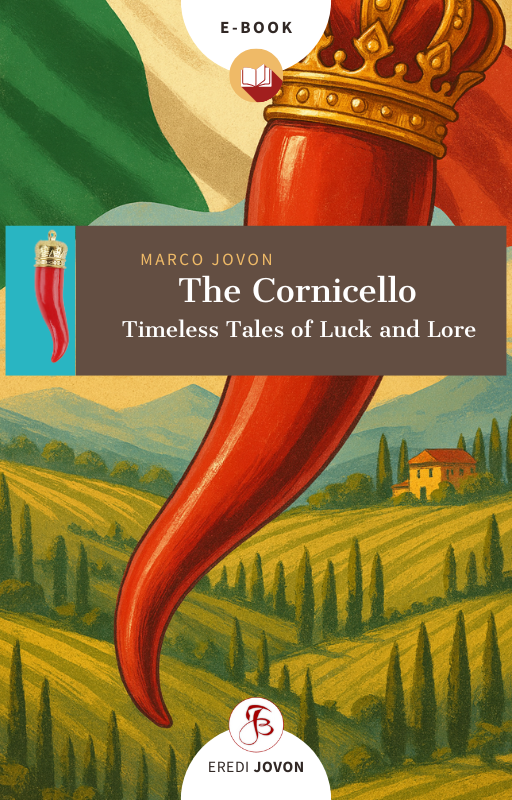
Free PDF – The Evil Eye and Italian Charms
Curious about the Evil Eye and how Italians protect themselves? Discover ancient rituals, the red horn, the horned hand and the Nazar Eye: a short guide that turns superstition into culture and craftsmanship.
Download the EbookInformation
Last post
-

Love Hope Faith Amulet | Meaning and Tradition
Discover the meaning of the Faith, Hope & Charity charm: a timeless amulet to wear every day. A jewel that tells...
-

The Four-Leaf Clover: the rare gift that dares to speak to the heart
Discover the true meaning of the four-leaf clover and its Italian twist with the lucky cornetto charm—a rare story...
-
